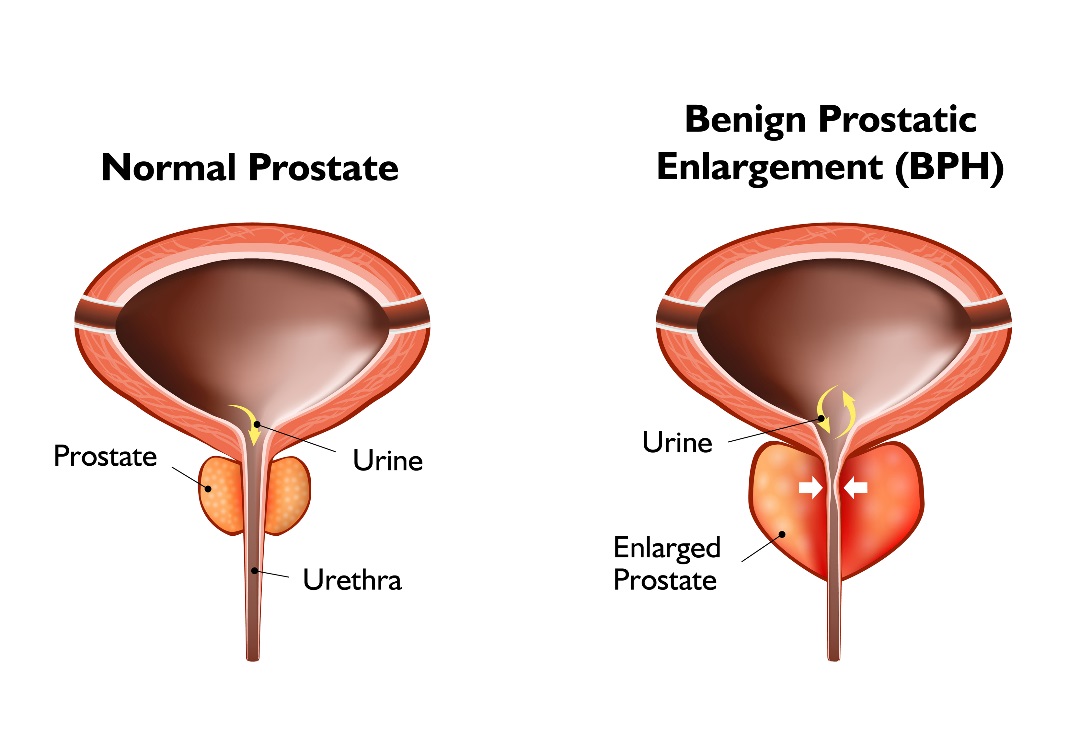What is BPH?
Benign Prostatic Hyperplasia, or BPH, is a condition in which the prostate enlarges as men get older. BPH is a very common condition that affects over 40 million Americans and over 500 million aging men worldwide. Over 40% of men in their 50s and over 70% of men in their 60s have BPH. While BPH is a benign condition unrelated to prostate cancer, it can greatly affect a man’s quality of life.
The Urolift System can provide rapid relief of BPH
The UroLift System uses a minimally invasive approach that provides rapid relief and recovery of BPH symptoms. It is an earlier treatment option that can get men off BPH medications and avoid major surgery. The UroLift System treatment has demonstrated a significant improvement in quality of life for patients compared to medications.
As the prostate enlarges, it presses on and blocks the urethra, causing urinary symptoms such as:
- Frequent need to urinate
- Weak or slow urinary stream
- A sense that you cannot completely empty your bladder
- Difficulty or delay in starting urination
- Urgent feeling of needing to urinate
- A urinary stream that stops and starts
How Does The UroLift System Work?
The UroLift System uses a revolutionary approach to treating BPH that lifts and holds the enlarged prostate tissue so it no longer blocks the urethra. It is the only available BPH treatment performed by a urologist that does not require heating, cutting, or removal of the prostate tissue. The procedure is typically performed using local anesthesia in a physician’s office or ambulatory surgery center. Patients typically return home the same day without a catheter.
Frequently Asked Questions
Who is a good candidate for the UroLift System treatment?
You may be a good candidate if you are a male, 45 years of age or older, and have symptoms relating to BPH. Speak with your urologist to see if the UroLift System treatment is right for you. If you have a known allergy to nickel, titanium or stainless steel, talk to your doctor about your allergy before getting a UroLift system treatment.
What should I expect during the treatment? Is it painful? How long does it take?
In general, the UroLift System is a minimally invasive treatment that entails minimal downtime. Your doctor will use the UroLift Delivery Device to deploy permanent implants to relieve obstruction caused by the enlarged prostate that is pressing on your urethra. The procedure, which usually takes less than an hour, may be performed under local or general anesthesia and you may be given medication to feel comfortable during treatment. This typically helps minimize discomfort during the procedure, though everyone’s definition for pain and discomfort varies greatly. Typically, no catheter and no overnight stay is required post-treatment.
What happens post-treatment, during the recovery period? Are medications required?
After the treatment, patients typically go home the same day without a catheter. There is minimal downtime post-treatment and many patients experience symptom relief in as early as 2 weeks. Patients may experience some urinary discomfort during the recovery period. Most common side effects are mild to moderate and include pain or burning with urination, blood in the urine, pelvic pain, urgent need to urinate and/or the inability to control the urge. Most symptoms resolve within two to four weeks after the procedure.
Does my insurance cover the treatment?
The UroLift System treatment is covered by Medicare and many private insurers. Contact your insurance provider for your specific coverage information.
If you and your doctor decide that the UroLift System treatment is right for you, your doctor will provide you with more detailed information relating to the treatment.
Interested in the UroLift System? Schedule an appointment with Dr. Wesley Porta at 225-246-9240 to see if you qualify for the procedure.
Related Media

Misconceptions about how diet affects kidney stones
This content is courtesy of Mayo Clinic, the No. 1 hospital in the world according to Newsweek. The Baton Rouge Clinic is a member of the Mayo Clinic Care Network….

